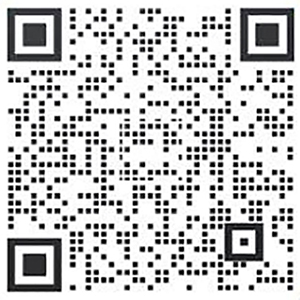2020年五大风险管理预测
2020-02-06 14:06 未知 责编:Frm_Ren
2024年FRM备考资料
- FRM考纲变化
- FRM英语词汇及公式表
- 思维导图
- 全新复习资料
- 前导课程
- 历年习题汇总
巴塞尔关于风险的指导已经有32年历史了,这听上去有些令人难以置信。在随后的大部分时间里,企业主要将风险管理视为合规的工具。相较之下,如今几乎所有人都看到了风险管理改善业务的潜力。
此外,一批重要的风险管理新趋势已经出现。现在让我们来看看2020年的5个预测,它们可能会给风险管理领域带来翻天覆地的变化。
风险评估的三道防线模式即将瓦解
We can pretend this is driven by budget cuts and a loosening of regulations, but we know the changes to this model are long overdue in financial services. Firms in other industries (including manufacturing) never adopted the three lines of defense model, because they never needed it.
In 2020, financial services firms will reconsider their approach to non-financial risks, managing them more like financial risks. Risk metrics will be created in transaction systems, while risk systems will aggregate, apply correlations and produce analytics. Qualitative risk factors will continue to rely on expert judgement, supported by quantitative metrics.
Second-line-of-defense functions, such as risk management and compliance, will continue to thrive and prosper, with a focus on framework, policy, methodology and analytics. Their expertise will help the business reimagine resilient customer fulfillment.
What's more, sustainability, cybersecurity and third-party management will be built into business processes. Risk assessments will be unwittingly completed by people closest to the risk, using assessment questionnaires triggered by thresholds, incidents and events (see diagram, below).
在评估问卷中融入风险管理
Internal audit assurance will remain vital, but will become a thin layer responsible for reviewing continuous monitoring of controls; advising business on key controls; and monitoring the efficacy of functional group (e.g, risk and compliance) activities. Business will be better, because the focus will be on the critical economic functions and how customers are fulfilled within an acceptable level of risk.
业务流程自动化将被重新设计
A combination of automation, robotics and AI will be further embedded in risk management. To digitize and sustainably provide services and goods for the achievement of both societal and customer objectives, resources will be redeployed.
Digital interaction will incite collaboration and work fulfillment, and, through layering into transaction systems, standalone risk management software applications will eventually “disappear.” Moreover, data lineage software will be used to locate existing intelligence across multiple internal systems, and risk appetite statements for the degree of process digitization will become common.
Relationships between internal issues and incidents and customer complaints streaming through Twitter will be recognized, and this intelligence will assist in ranking the most critical actions.
There will also be a variety of platform approaches to integrate technologies, whether through the cloud or internal infrastructure. Artificial intelligence, for example, will become a common tool for regulatory change management. Natural language processing will establish firms' risk and compliance taxonomies, building the relationships between the taxonomy data objects such as risks and controls.
What's more, managed services through consortiums or third-party services will be more common. This will include third-party management, regulatory changes, cyber threat monitoring and AML bad-guy profiling through cross-industry consortiums. Firms will near-shore outsource authentication, as well as software asset management and regulatory reporting.
Stress testing will become more focused on operational resilience, including internal and external factors such as climate change. Firms, of course, will want to understand the effects of these factors on revenues, earnings and capital – but regulators and customers will want to comprehend the impact of mishaps on customer outcomes.
Firms will also set thresholds for what customer service inconveniences and disruptionw they expect, while regulators will set tolerances based on what is acceptable. Customers and third-parties should expect this information to be more readily disclosed, as firms more carefully manage their reputation and sustainability.
可持续风险将成为主要风险
Our understanding of this risk is in its infancy. Like cybersecurity risk, it will depend greatly on a firm's ability to respond to events out of their control.
The outcome of sustainability is directly connected to how long an organization survives, and is largely dependent on a firm's ability to manage geo-political events, third-parties and disruptions to its business processes.
A sustainability risk taxonomy should be developed to evaluate not only a firm's environmental risks but also its operational resilience and reputation.
在关键经济职能中整合ERM
Coming full circle from the first prediction about the disappearance of lines of defense, financial and nonfinancial risks will be tied to the critical, customer-centric economic function. Tolerable levels of potential failure, or risk, will be measured by thresholds aligned to growth, risk appetite and operational resilience objectives.
Whether a firm's risks are primarily financial or nonfinancial, they will have effects on both short-term earnings and long-term reputation and survival.
CRO有时会扮演未来学家的角色
As the key consiglieri to the CEO about what factors will impact the present, the emerging and the strategic, the CRO will grow stronger and stronger. But he or she cannot be strictly focused on, say, the interest rate option vega position or the absolute size of operational losses.
Instead, the CRO must be about evaluating how a new digital mortgage loan underwriting and fulfillment process increases financial and nonfinancial risk exposures in unexpected ways. Or how airplane assembly supply chain could be impacted by an unexpected production halt. Or how car production is impacted by a new round of tariffs.
The scenarios go on and on.
一些其他思考
In 2020, we'll likely see significant changes in risk models, processes and functions. The CRO storyteller must focus the firm on what is most critical, while guiding the discussions about the impacts of digitization and third-party dependencies on the business process for the good of the firm, the customer and society.
Brenda Boultwood是德勤的风险咨询合伙人。她曾担任Constellation Energy的高级副总裁和首席风险官,并曾担任首席风险官委员会(CCRO)和GARP的董事会成员。在加入德勤之前,她曾担任MetricStream的行业解决方案高级副总裁,负责一系列关键行业垂直领域的投资组合,包括能源和公用事业、联邦机构、战略银行和金融服务。在此之前,她曾在摩根大通(J.P. Morgan Chase)担任另类投资服务策略全球主管,负责公司的对冲基金服务、私募股权基金服务、杠杆贷款服务和全球衍生品服务。
本文作者Brenda Boultwood,来自微信公众号GARP,版权归作者所有。
>>>>新版FRM一二级内部资料扫码免费领!【精华版】


- 上一篇:金融工程专业考FRM有用吗?
- 下一篇:复习FRM要看网课吗?FRM一级考什么?
热门搜索
猜你喜欢换一批
- 2023年11月金融风险管理师报考时间与费用!
- 金融风险管理师(frm)认证模拟在哪下载?
- 风险管理师frm证书含金量怎么样?FRM金融风险管理师好考吗?
- 金融风险管理师考几科?frm考试题型时什么?
- 金融风险管理师年薪多少?获得FRM认证有什么好处?
- 金融风险管理师是做什么的?前景如何?
- 金融风险管理师待遇如何?有哪些岗位适合frm持证人?
- 2022年金融风险管理师考试有中文的吗?FRM一级考试科目有有哪些重要内容?
- 金融风险管理师考试什么时候开始?
- 金融风险管理师是什么?如何获得FRM证书认证?

考
试倒
计
时
试倒
计
时
距离下次FRM考试
还剩
{{GetRTime1}}
天
重要提醒
- 24年5月11日-17日是FRM一级考试时间
- 24年5月18日-22日是FRM二级考试时间
- 23年12月1日:FRM23年5月FRM考试【早鸟价报名阶段】开始
- 24年2月1日:FRM23年5月FRM考试【标准价报名阶段】开始
- 24年4月21日:FRM23年5月FRM考试【考位选择】截止
热门阅读换一换
- 12023frm百度网盘,这些资料你有吗?
- 2FRM历年通过率高吗?如何提高FRM通过率?
- 3CFA、FRM、CPA都值得考吗?
- 4高顿FRM资料全分享:2023年全新FRM备考教材分享(附视频)!
- 5大学生考哪些国际证书比较好?FRM,CFA还是acca?
- 6FRM复习资料全部汇总:了解FRM入门、复习、练习所有教材!
- 7一份在职备考FRM的复习安排!
- 8FRM考试费用一般是多少,考完两级得花多少钱!
- 9备考FRM考试,别人只要3个月,我却花了一整年!
- 10CFA和FRM都考有用吗,难度大不大?
- 112020年11月FRM报名将在10月15号截止!
- 122023年5月FRM一级备考,很实用的复习方法!
- 13【新手必看】2020年FRM考试报名费用各类细节问题汇总答疑
- 14重要通知:2021年FRM考试改革,FRM考试改为机考模式!
- 15CFA和FRM,我是不是要都考?
- 16经验分享:21岁金融系女生高分考过FRM,干货分享!
- 17报完FRM考试后能延期考试吗?如何延期?
- 18金融风险是做什么的,有必要考FRM(金融风险管理师)吗?
- 19什么是机器学习
- 20什么是风险效应
- 21债券结算代理业务是什么
- 22本票关系是什么
- 232023年frm一共几级
- 24什么是信用卡呆账核销
- 25FRM报名怎么交费
- 26企业特有风险是什么
- 27国际贸易学是什么
- 28考完frm一级是不是一定要考二级
- 29低风险扩张理论是什么
- 30什么是出口收汇风险






